October 7th, 2025
18 Best Snowflake Competitors and Alternatives I Tested in 2025
By Drew Hahn · 18 min read
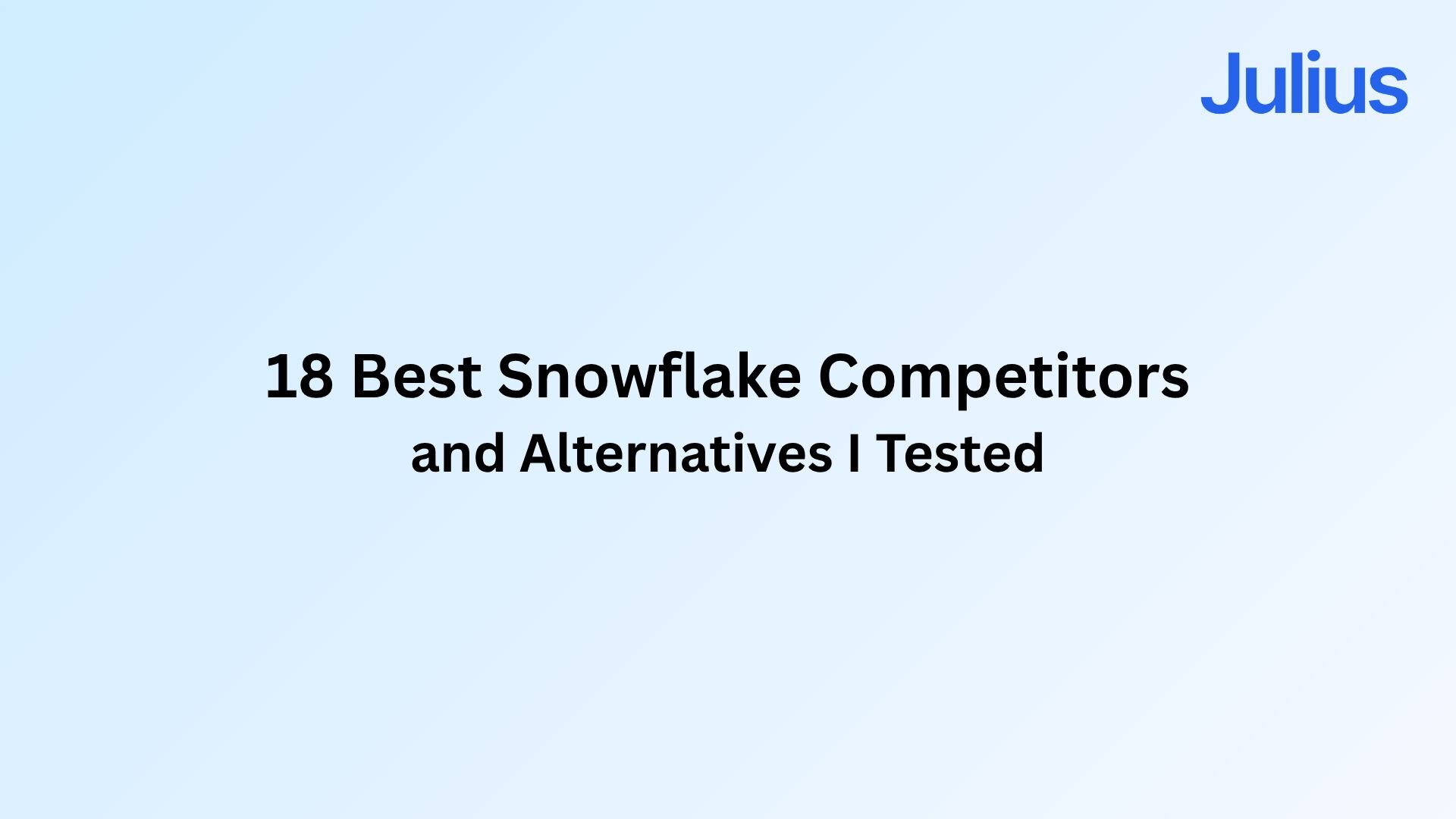
Snowflake competitors are a better fit if credit-based pricing runs high or your team wants simpler tools. Platforms like Databricks and BigQuery focus on scaling AI and ad-hoc analysis, while Julius makes queries easier for non-technical users.
I tested a bunch of Snowflake alternatives and these are the 18 best in 2025.
In this article, we’ll cover:
Snowflake competitors at a glance
Why I looked for alternatives
18 alternatives to Snowflake reviewed
How to choose your tool
18 Snowflake competitors: at a glance
Finding the right Snowflake competitors depends on whether you need lower costs, simpler onboarding, or advanced analytics features. Here are 18 of the top options I tested in 2025:
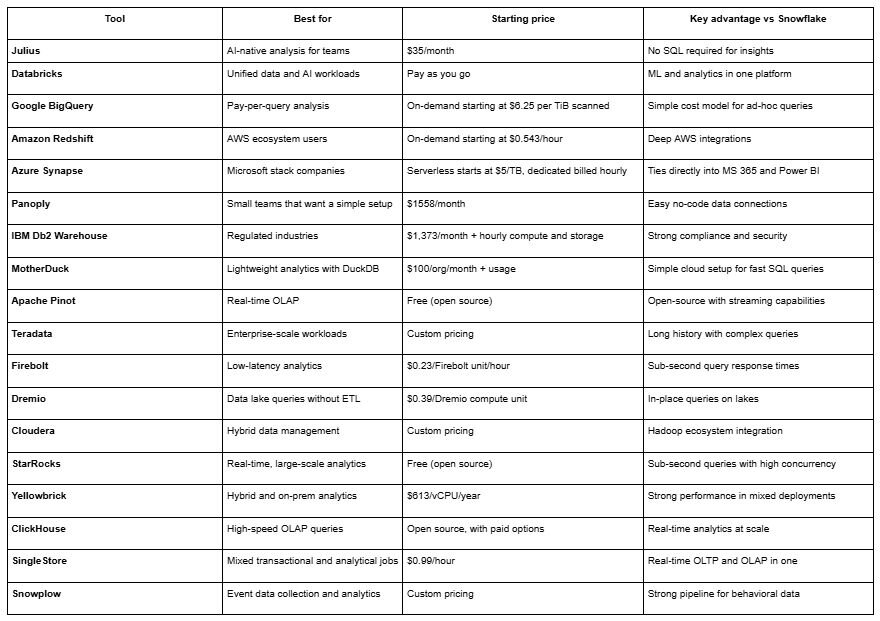
Why I looked for Snowflake alternatives
Snowflake’s credit-based pricing is transparent, but I found it tricky to manage in practice. Compute and cloud services draw from credits, while storage is billed separately at a flat rate per TB each month. Even with clear rates, monthly bills often ended up higher than expected once compute workloads scaled.
Another challenge was onboarding non-technical teammates. Since SQL knowledge is often required, I spent time building views or adding BI tools on top, which slowed down their ability to explore data on their own.
And while Snowflake stores data efficiently, it doesn’t provide much in the way of built-in analysis or visualization. I still needed extra tools for dashboards or AI-driven insights, which made the stack heavier.
From my own testing, three issues often push teams to look for alternatives to Snowflake:
Budget control: Credit consumption can rise quickly as queries and compute jobs stack up.
Accessibility: Business users struggle without SQL skills or a BI layer.
Feature gaps: Storage is strong, but analysis and visualization need separate tools.
That’s when I started testing tools that were direct and indirect competitors of Snowflake, beginning with Julius to see how an AI-native platform compared.
1. Julius: Best for AI-native analysis for teams
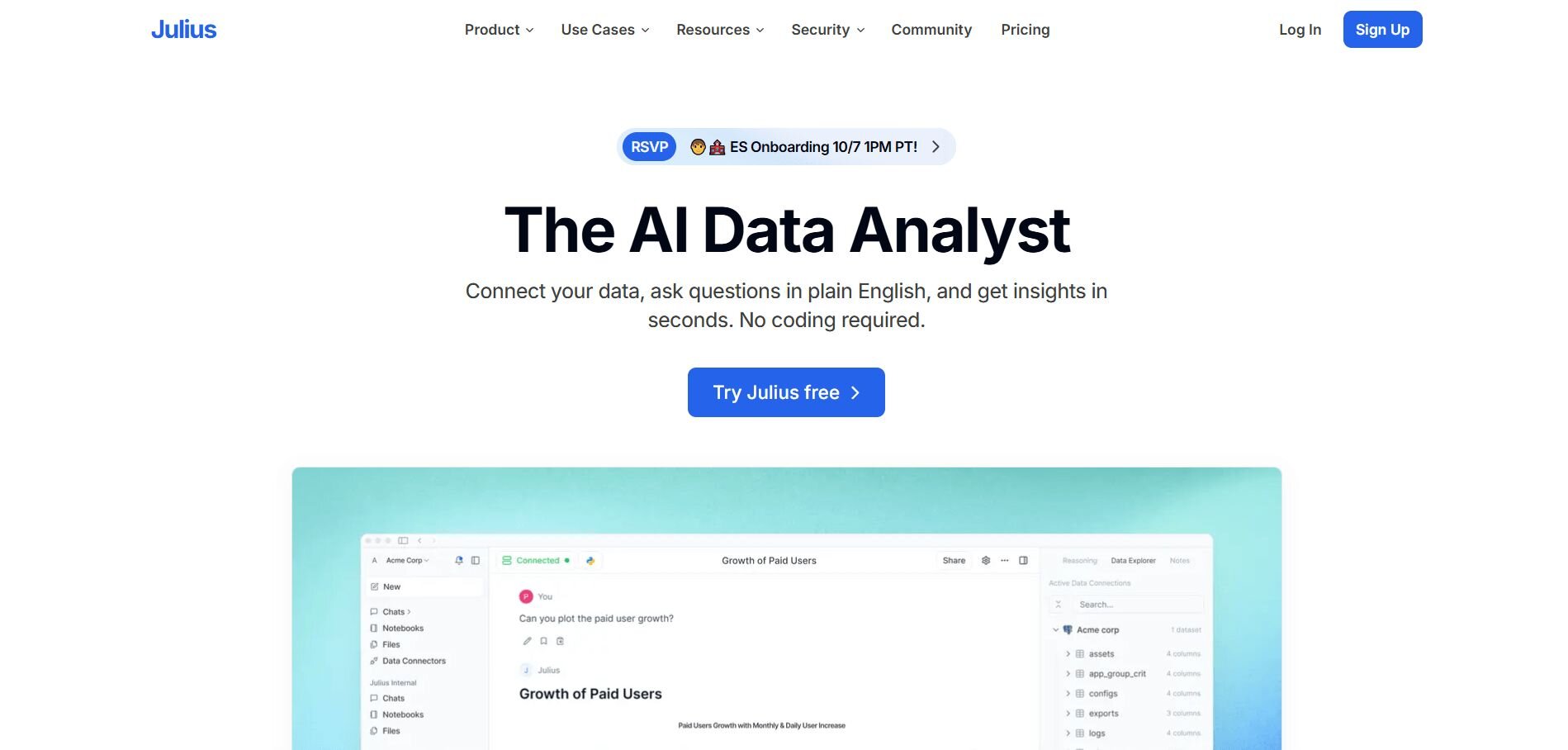
We designed Julius to give teams a faster way to analyze data without SQL. You can upload a CSV, connect a warehouse like Snowflake, or link a SaaS tool such as Google Ads, then ask questions in plain English to get charts fast. This makes it easier for non-technical teammates to explore data on their own.
Notebooks let you save recurring jobs like revenue forecasts or retention checks and rerun them with fresh data. You can also schedule reports to Slack or email so updates go out automatically, which keeps the whole team aligned.
Why it beats Snowflake
Lower entry cost: Starts under $40 per month
Faster onboarding: Connect data and run queries right away
Accessible: Business users don’t need SQL to use it
Pros
Direct connectors for databases and SaaS tools
Scheduled reports delivered to Slack or email
Repeatable Notebooks for common metrics
Cons
Doesn’t replace full data warehouse storage
Smaller ecosystem than enterprise BI platforms
Pricing
Julius has a free plan and paid tiers starting at $35 per month, which covers 250 queries to Julius.
Bottom line Julius is a strong option if you want a quick analysis on top of your data. It makes everyday reporting faster, but it isn’t built to replace Snowflake’s storage, so most teams use them together.
2. Databricks: best for unified data and AI workloads
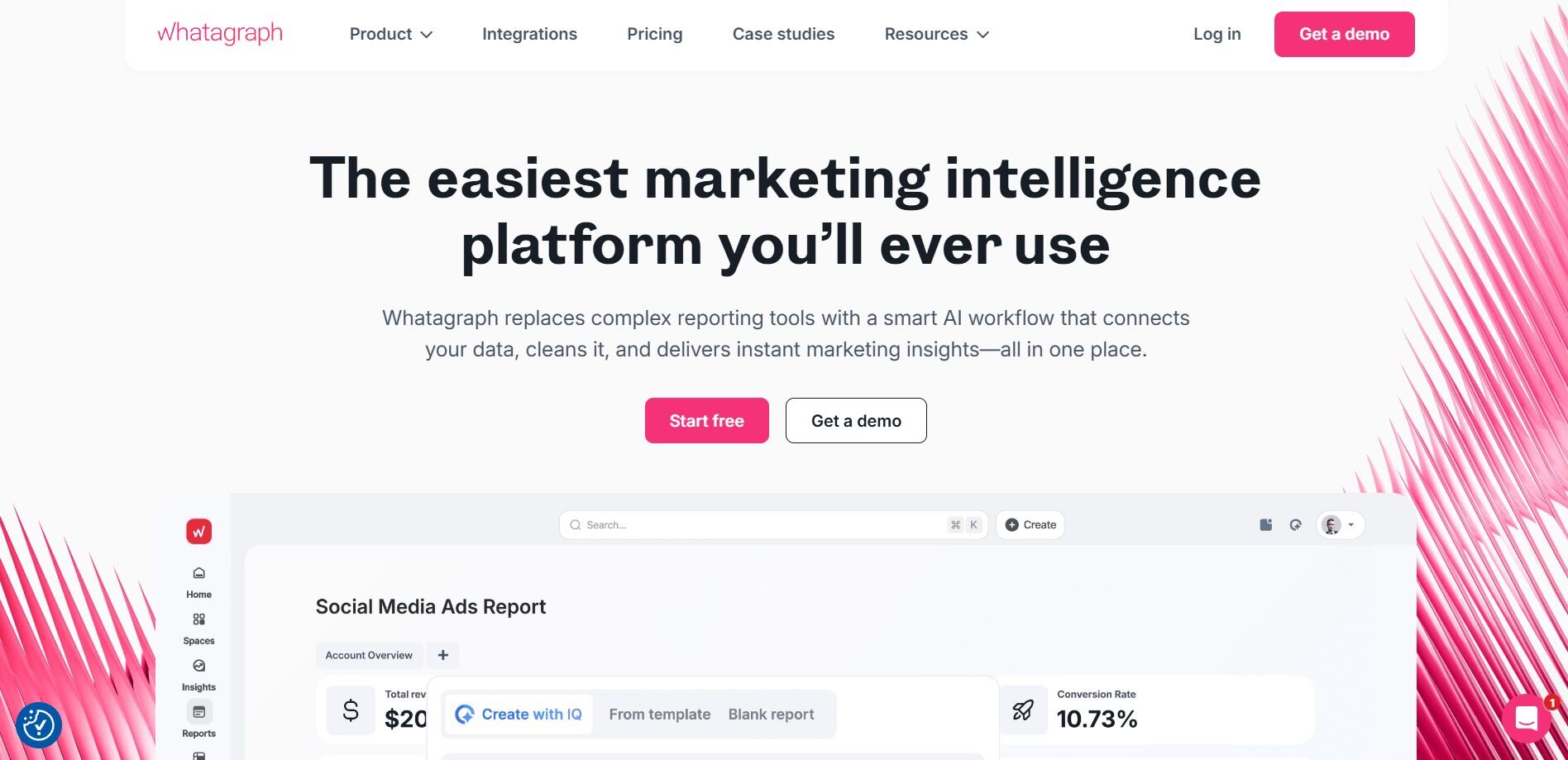
Databricks is a lakehouse platform that runs on all major clouds. I used it for both structured data and unstructured logs, and it didn’t need extra pipelines to handle either.
What stood out in testing was how smoothly it let me run ML jobs next to SQL queries. I built a model in Python, then switched to ad-hoc queries without leaving the workspace. Shared notebooks also made teamwork easier, since multiple people could edit and track changes in real time.
Why it beats Snowflake
Unified workflows: ML and analytics run in the same environment
Data flexibility: Handles structured and unstructured data together
Collaboration: Shared notebooks make teamwork easier
Pros
Deep Apache Spark integration
Works across AWS, Azure, and Google Cloud
Supports large-scale machine learning projects
Cons
Setup takes longer than Snowflake
Requires engineering skills for best results
Pricing
Databricks uses a pay-as-you-go model based on compute and storage usage. Costs vary depending on the size and length of your workloads. You can check their pricing calculator to learn more.
Bottom line
Databricks is a strong option if you want analytics and machine learning in the same place. It takes more setup than Snowflake, but it pays off when your workloads mix traditional queries with AI training.
3. Google BigQuery: best for pay-per-query analysis
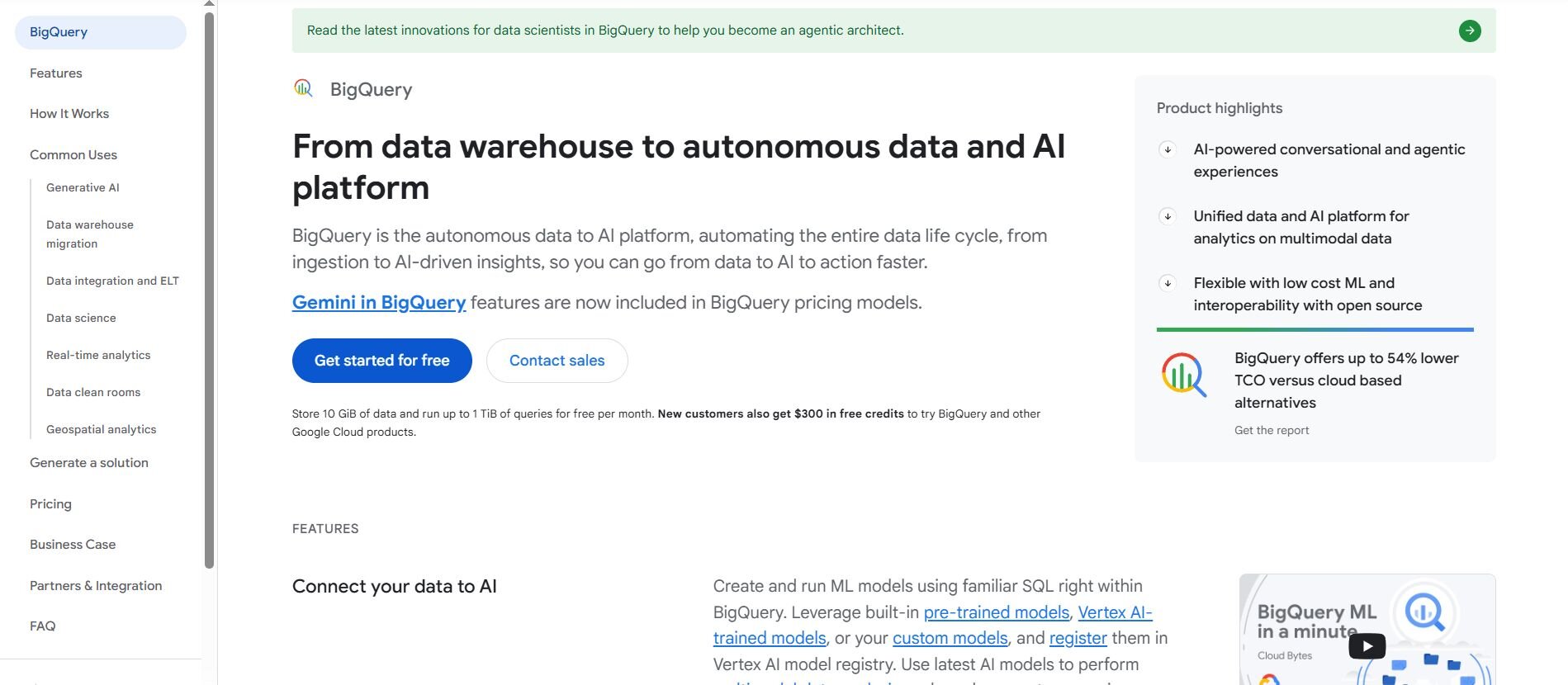
BigQuery is a serverless warehouse from Google Cloud. I liked how the pay-per-query model made it simple to run analysis without worrying about credits. In testing, it scaled smoothly from small lookups to terabyte scans. I also tried BigQuery ML, which let me train models directly in SQL, a nice shortcut when I didn’t want to spin up separate infrastructure.
Why it beats Snowflake
Straightforward costs: Pay only for the queries you run
SQL-friendly ML: Train models inside the warehouse
Scalability: Handles small checks and massive scans alike
Pros
Serverless, no infrastructure to manage
Strong Google Cloud integrations
BigQuery ML for in-database modeling
Cons
Costs add up with frequent queries
Limited flexibility outside GCP
Pricing
On-demand pricing starts at $6.25 per tebibyte (TiB) scanned, with $0.02 per gibibyte (GiB) stored.
Bottom line
BigQuery works well if your team is already on Google Cloud and you want predictable per-query pricing. It’s less flexible for multi-cloud setups but shines for ad-hoc analysis.
4. Amazon Redshift: best for AWS ecosystem users
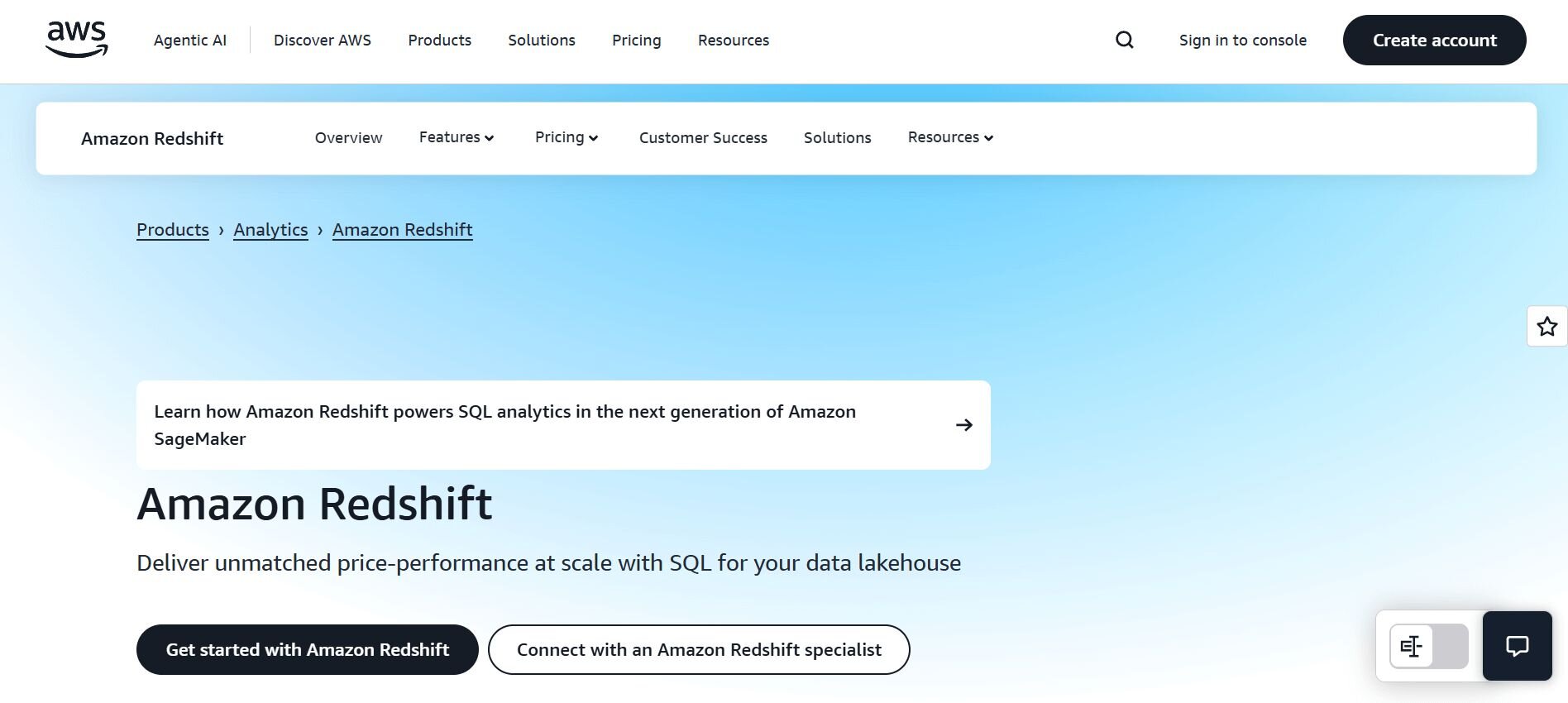
Redshift has been around for years, and I found it fits well if you’re deep in AWS already. I connected it to S3 for storage and Glue for ETL jobs, and the workflow was straightforward once configured. Elastic resize was helpful because I could scale clusters up for heavy queries and then scale them back down without moving data.
Why it beats Snowflake
AWS-native: Tight integration with S3, Glue, and Lambda
Cluster control: Resize compute when workloads change
Established platform: Long history and wide support
Pros
Strong AWS ecosystem ties
Good for long-term reserved pricing
Mature platform with many connectors
Cons
Manual tuning for best performance
Less friendly for semi-structured data
Pricing
Redshift Provisioned starts at $0.543 per hour for RA3 nodes, while Redshift Serverless begins at $1.50 per hour. Reserved pricing discounts are available for committed use.
Bottom line
Redshift is a practical choice if your stack is built on AWS. It needs more hands-on management than Snowflake, but costs can be optimized with reserved pricing.
5. Azure Synapse: best for Microsoft stack companies
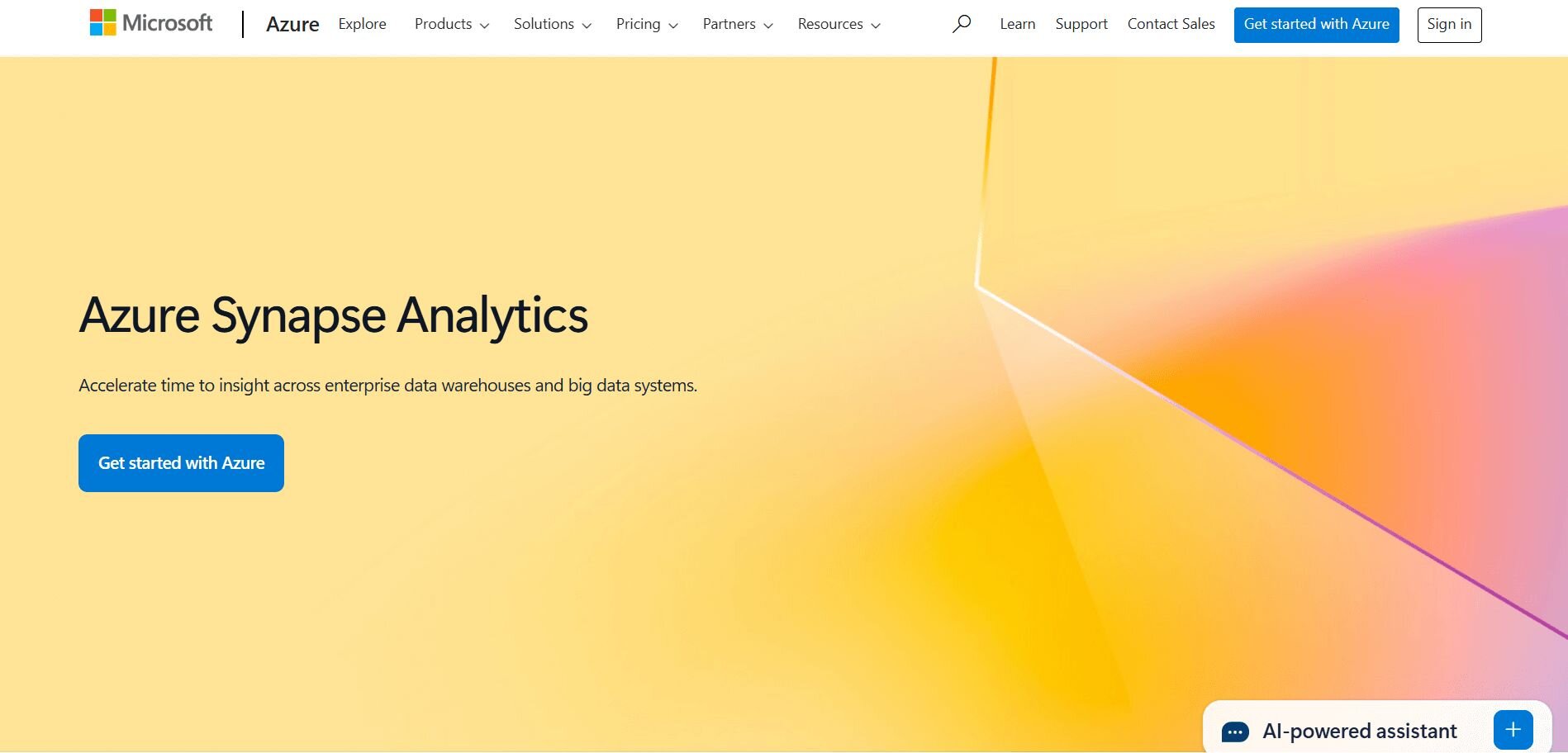
Synapse connected cleanly with Microsoft tools in my testing. Power BI integration was the highlight, since I could run a query in Synapse and see the results in a dashboard almost instantly. Spark integration was also useful for blending big data processing with SQL jobs. The interface took some learning, but once set up, it felt natural for a team already using Microsoft 365.
Why it beats Snowflake
Power BI tie-in: Run queries and see results in dashboards quickly
SQL and Spark: Mix analytics and big data jobs
Microsoft ecosystem: Fits neatly with MS 365 and Azure ML
Pros
Strong Microsoft integrations
Serverless and dedicated options
Good for hybrid SQL and Spark needs
Cons
Pricing is harder to predict
Steeper learning curve than Snowflake
Pricing
Synapse pricing starts at $5 per TiB of data processed with serverless SQL pools. Dedicated options are billed separately.
Bottom line
Synapse makes sense if you already rely on Microsoft 365 and Azure services. It’s not as straightforward as Snowflake, but the native integrations save time.
6. Panoply: best for small teams that want a simple setup
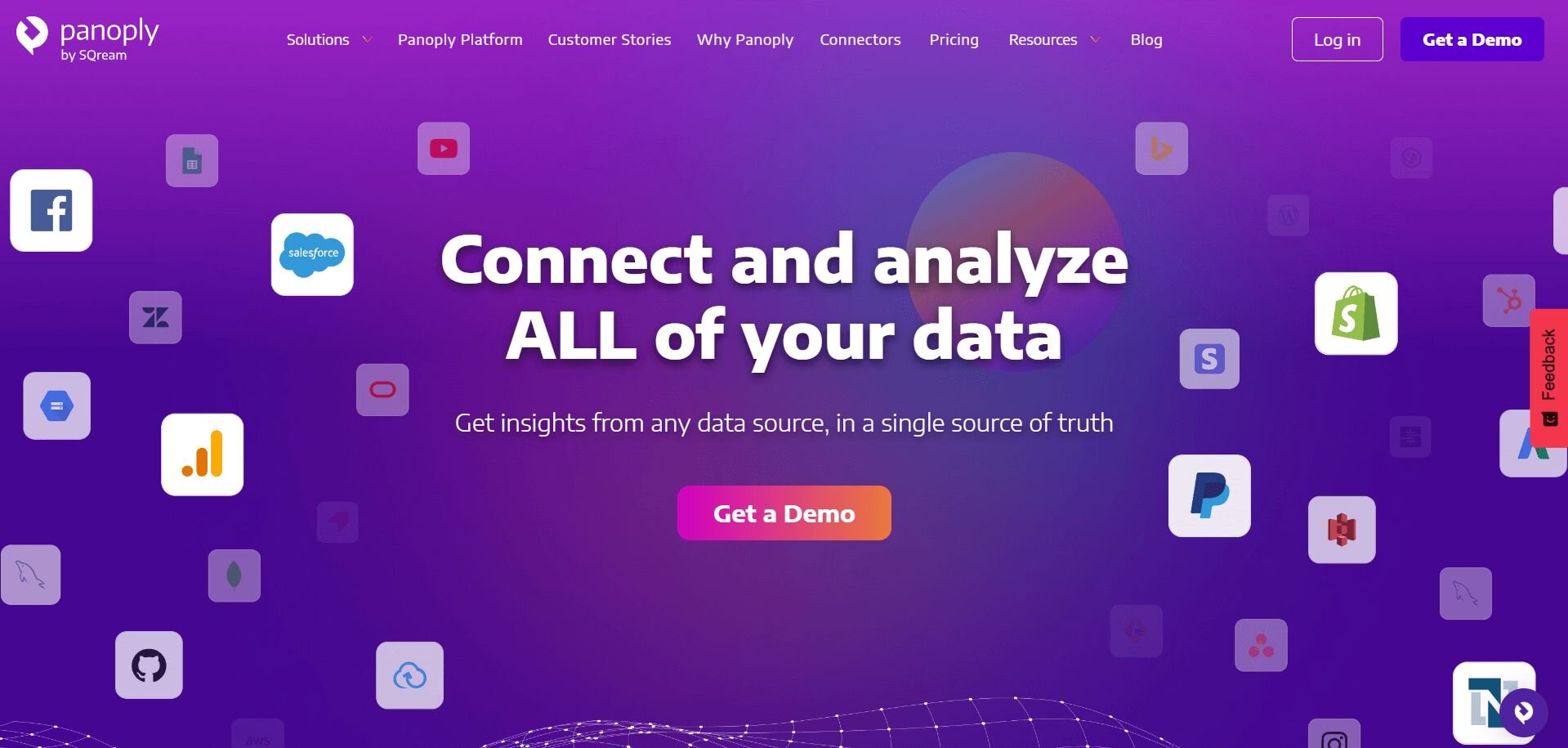
I really liked that the Panoply setup only took minutes. I connected Google Analytics and Shopify without writing code, and the data appeared in tables on its own after I authorized the connections. Queries ran fast enough for small-to-mid datasets, though it didn’t match the raw power of Snowflake. For smaller teams, the ease of setup and no-code connectors made it more approachable.
Why it beats Snowflake
Easy onboarding: No coding needed to connect sources
All-in-one setup: Storage and analysis in one place
Small-team focus: Priced and designed for lean teams
Pros
Dozens of no-code integrations
Quick start with little technical skill needed
Automated data pipeline setup
Cons
Limited scalability for large enterprises
Less flexible than larger warehouses
Pricing
Panoply starts at $1,558 per month with pricing based on data storage and query volume.
Bottom line
Panoply is a fit for small teams that want fast setup and simple reporting. It doesn’t match Snowflake’s scale but works well for lean operations.
7. IBM Db2 Warehouse: best for regulated industries
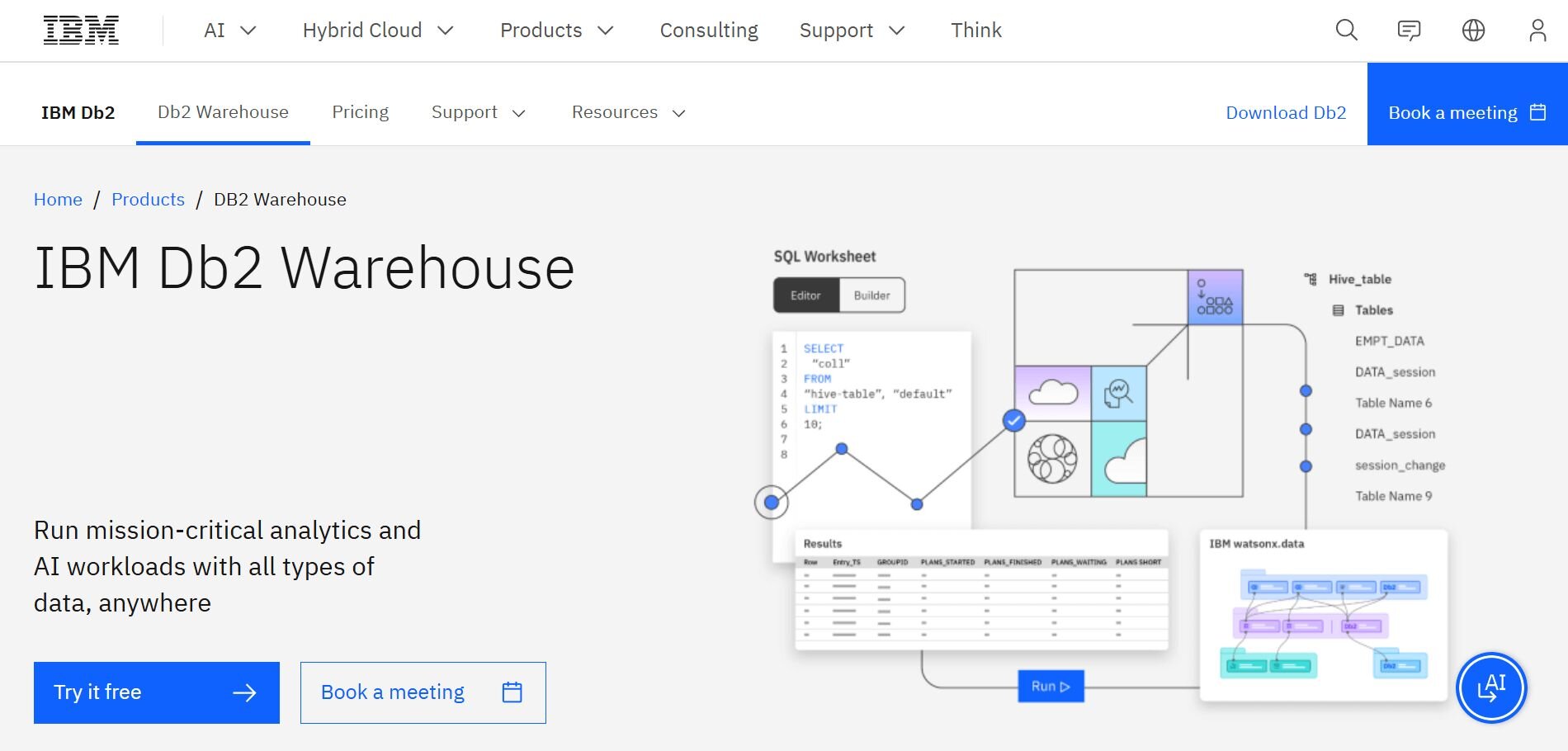
I tried IBM Db2 Warehouse specifically with some healthcare data, and the compliance focus was clear. It supports HIPAA and GDPR out of the box, and fine-grained access controls were easy to configure. Performance was strong for structured queries, but managing the platform took more skill than Snowflake.
Why it beats Snowflake
Compliance-ready: Meets HIPAA and GDPR standards
Enterprise-grade: Built for large, regulated companies
Access control: Detailed security features built in
Pros
In-memory processing for fast analytics
Strong governance and security features
Uptime guarantees for enterprise workloads
Cons
Higher costs than Snowflake
Requires specialized expertise to manage
Pricing
IBM Db2 Warehouse starts at $1,373 per month for entry configurations. Storage is billed monthly, while compute is billed hourly based on the resources you use. Total costs scale with workload size and runtime.
Bottom line
Db2 Warehouse is worth it if compliance is non-negotiable. It’s more complex than Snowflake, but the governance and security features meet enterprise requirements.
Other noteworthy Snowflake alternatives
Not every Snowflake competitor is built to replace a full warehouse, but some work well for niche jobs. These platforms often focus on real-time queries, hybrid deployments, or lightweight setups where the larger tools aren’t the right fit. These tools cover narrower use cases but proved useful in my testing:
MotherDuck: I used MotherDuck to bring DuckDB queries into the cloud. It worked best for lightweight jobs where I didn’t want to spin up a full warehouse, though it wasn’t built for enterprise-scale loads.
Apache Pinot: Pinot gave me low-latency OLAP queries on streaming data. It excelled at dashboards that needed sub-second results, but managing clusters required more expertise than Snowflake.
Teradata: Teradata handled complex queries across massive datasets. I liked its workload management, but the setup and licensing made it harder to justify for smaller teams.
Firebolt: Firebolt stood out in my tests for sub-second queries and indexing tricks that cut down scan times. The tradeoff was a smaller integration ecosystem compared to Snowflake.
Dremio: I queried data directly from lakes with Dremio, which saved time on ETL. Performance was strong once reflections were set up, but it took compute power to handle big workloads smoothly.
Cloudera: Cloudera worked well in a hybrid environment where some data stayed on-prem and some ran in the cloud. It was flexible, though the complexity made it best for teams with dedicated admins.
StarRocks: I ran high-concurrency queries with StarRocks and saw fast responses even on large datasets. The downside was a learning curve for OLAP-style tuning.
Yellowbrick: Yellowbrick impressed me with hybrid deployments where cloud and on-prem needed to stay connected. It felt enterprise-heavy, and costs leaned toward large-scale use.
ClickHouse: I tested ClickHouse for real-time analytics on large log data. It was extremely fast, but it uses its own SQL dialect and doesn’t support full ACID transactions, which required workarounds for some use cases.
SingleStore: SingleStore supports Hybrid Transactional/Analytical Processing (HTAP), which lets you run transactional and analytical queries in the same system for real-time insights. It’s efficient for mixed workloads, though storage costs can rise with very large datasets.
Snowplow: Snowplow captured detailed event-level data and streamed it into downstream systems for analysis. It gave me granular insights into user behavior, but required engineering time to set up and maintain.
How I tested these alternatives (and what I looked at)
I’ve already used some of these tools in my own stack, and for the rest I set up trial accounts or demos, connected sample datasets, and ran the same core jobs. I focused mostly on finance and marketing examples because those are common use cases for Snowflake. This gave me a consistent way to see how each platform performed.
Here’s what I looked at:
Setup speed: How long it took to load data, connect a warehouse, and run the first query.
Ease of use: Whether a manager without SQL could explore data and get answers.
Analysis options: Which platforms support machine learning or AI-driven queries out of the box.
Integration coverage: Whether connectors worked for Snowflake, Postgres, and Google Ads.
Pricing clarity: Which vendors list pricing upfront versus requiring custom quotes.
How to choose your Snowflake alternative
Cost, ease of use, and data requirements matter when picking the right platform. Choose:
Julius → if you want fast answers in plain language without writing SQL
Databricks → if your workloads combine machine learning and analytics in one place
BigQuery → if you want straightforward pay-per-query pricing in Google Cloud
Redshift → if your stack is already built around AWS services
Azure Synapse → if your team relies on Microsoft 365 and Power BI
Panoply → if you’re a small team that needs a quick no-code setup
IBM Db2 Warehouse → if you work in regulated industries and need strong compliance
MotherDuck → if you want lightweight DuckDB queries in the cloud
Apache Pinot → if you need ultra-fast OLAP queries on streaming data
Teradata → if you’re a large enterprise running complex mixed workloads
Firebolt → if sub-second query performance is a priority
Dremio → if you prefer querying data lakes directly without ETL
Cloudera → if you need hybrid flexibility across on-prem and cloud
StarRocks → if high concurrency and real-time analytics are critical
Yellowbrick → if hybrid and on-prem performance drives your requirements
ClickHouse → if you need real-time analytics at scale with open source
SingleStore → if you want OLTP and OLAP handled in one platform
Snowplow → if event-level behavioral data collection is central to your strategy
These comparisons make it easier to see which Snowflake competitor matches your team’s needs without overpaying for features you won’t use.
My verdict
After testing these Snowflake competitors, I found that each one fits a specific type of workload.
Julius stood out when I needed quick answers in plain language, like churn by cohort, revenue forecasts, or ad spend by channel. I could ask the question, see a chart quickly, and schedule the report to go out via Slack or email without extra setup.
Databricks worked well for ML jobs alongside SQL, and BigQuery made ad-hoc analysis simple with pay-per-query pricing. Redshift fit AWS-heavy stacks, while Synapse felt natural for Microsoft users with Power BI. Panoply was best for small teams with no-code needs, and Db2 Warehouse stood out for finance data and strong compliance.
Ready to switch from Snowflake? Start here
We designed Julius to answer day-to-day reporting needs like monthly revenue by region, customer churn across cohorts, or weekly ad spend breakdowns. You can do this without SQL or a long setup, which makes it easier for non-technical teams to keep pace.
If you’re looking at Snowflake competitors because of pricing, complexity, or ease of use, Julius can handle daily reporting, quick forecasts, and performance tracking so your team keeps moving.
Here’s what you can do with Julius:
Ask questions in natural language: Type “Show cash flow by month” or “NRR by cohort,” get a chart in seconds.
Database connectors: Pull data from Postgres, Snowflake, or BigQuery without SQL.
Scheduled reports: Send weekly or monthly updates to email or Slack automatically.
Ad-hoc checks: Run quick reads for board decks, investor notes, or internal reviews.
Notebooks: Save an analysis, like an NRR breakdown or cash flow report, and rerun it with fresh data whenever you need it.
Ready to see how Julius compares to your current stack? Try Julius for free today.
Frequently asked questions
What are Snowflake products?
Snowflake products cover storage, compute, and data sharing. Storage handles structured and semi-structured data, while compute scales with query demand. Extra features like secure sharing and governance make it a strong warehouse, but teams often add competitors for analysis, visualization, or compliance.
Are Databricks and Snowflake competitors?
Yes, Databricks and Snowflake are competitors, but they focus on different strengths. Snowflake is a warehouse for structured analysis, while Databricks combines data engineering, analytics, and machine learning in one platform.
What is the cheapest Snowflake competitor?
The cheapest Snowflake competitors are ClickHouse and MotherDuck, both of which offer free tiers and pay-as-you-go pricing. ClickHouse is open source and is also available as a fully managed service through ClickHouse Cloud, while MotherDuck manages DuckDB with a lightweight cloud option. Other platforms like BigQuery and RedShift also provide free credits for small-scale use.
Which Snowflake alternative is best for real-time analytics?
ClickHouse is a leading alternative for real-time analytics. It can process large volumes of event or log data quickly, which makes it popular for monitoring and streaming use cases. Apache Pinot and StarRocks are also designed for sub-second OLAP queries if real-time dashboards are your priority.
